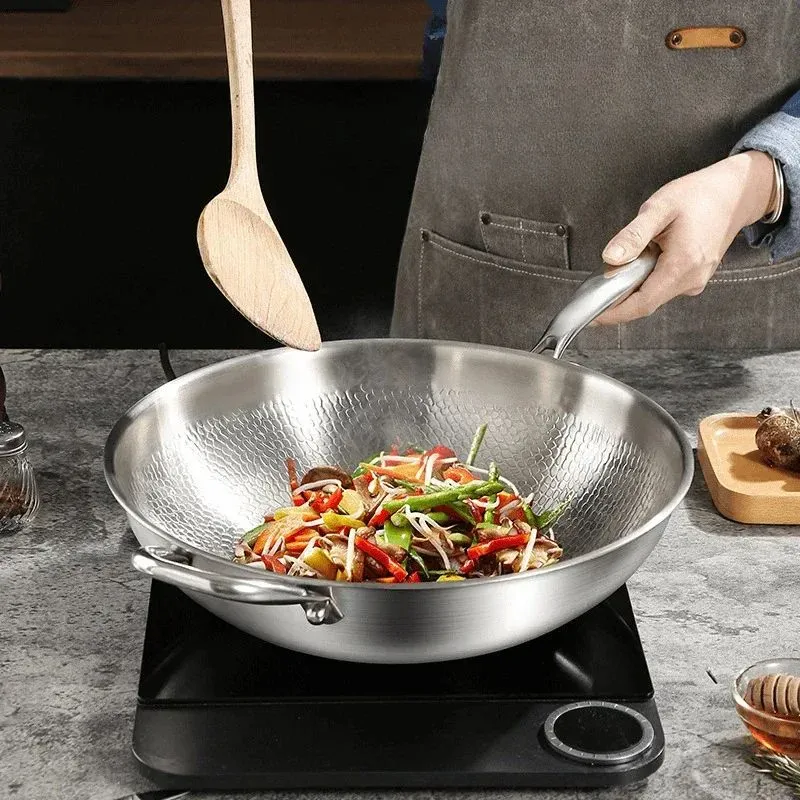
Lightweight, health-forward, and aesthetically appealing — titanium is quietly taking over our kitchens. Once reserved for spacecraft and medical implants, titanium products such as insulated bottles and cookware have entered mainstream consumer use.
Prices that once shocked shoppers (a single titanium tumbler costing upwards of 1,000 Chinese Yuan) now reflect a broader questioning from the general public: Is this just marketing, or a real material advantage? Below, 헝광, a 선도적인 티타늄 조리기구 제조업체, will unpack the rise of 티타늄 조리기구, its unique strengths, real-world limitations, and how to choose the right product without being misled by hype.
Explosive Growth: From Niche to Hot Category
The titanium kitchenware market has shown explosive growth in recent years. According to JD Consumer Data, from 2023 to 2025, the compound growth rate of the titanium kitchenware market transaction amount will reach 109%, and the compound growth rate of transaction users will also reach 118%
During last year’s Double 11 shopping festival, “titanium pots” and “titanium cups” were among the “nine major trend tracks” in Tmall’s home furnishing industry, with an astonishing growth rate of over 1000%
Not only traditional kitchen appliance brands such as Supor, Midea, and Joyoung have launched titanium products, but also cross-border brands such as Xiaomi, Hema, and MUJI have begun to brand the titanium market
Titanium kitchenware, which used to cost thousands of Chinese yuan, is gradually becoming more affordable through supply chain optimization. JD.com announced that it will invest over 5 billion Chinese yuan in procurement funds in the next three years to promote the further popularization of titanium kitchenware

What gives titanium cookware its edge?
Health and safety — no heavy-metal leaching
The strongest selling point for titanium cookware is health. Titanium’s chemical stability makes it resistant to strong acids and bases and virtually free from heavy-metal leaching.
Experiments from labs have shown that after cooking tomato sauce with a pH of 2.5 in a titanium pot for 4 hours, the amount of titanium dissolved is less than 0.0003 milligrams per kilogram, which is only 1/50 of that of stainless steel
Because of its proven biocompatibility (used widely in medical implants), titanium reassures health-minded consumers that their cookware won’t contaminate food.
Lightweight yet durable — easier cooking, less effort
Titanium’s density (~4.5 g/cm³) is roughly 57% that of iron, while its mechanical strength can match or exceed many steels. The result: pots and pans that are noticeably lighter and still robust. Lighter cookware is easier to handle, flip, and lift — a clear advantage for everyday cooks and especially popular among women and anyone who values ergonomic design.
Corrosion resistance and self-healing surface
When exposed to air, titanium forms a dense titanium oxide film that resists corrosion. This oxide layer has a self-healing property: minor scratches re-passivate quickly on contact with oxygen. That resilience gives 티타늄 조리기구 long life in humid, salty, or acidic environments where other metals might corrode.
Antibacterial and flavor-preserving properties
Industry voices often highlight titanium’s capacity to keep tastes pure and resist microbial adhesion. For consumers worried about metallic aftertastes or microbial growth in drinkware, cookware, and containers, titanium offers an appealing alternative.

Realistic Limitations: Where Titanium Still Needs Improvement
Thermal conductivity and “hot-spot” cooking
Titanium’s thermal conductivity is much lower than aluminum’s — roughly 1/16 that of aluminum. In practice, this can lead to uneven heating (hot spots and cold zones) if the cookware is pure titanium. Manufacturers mitigate this with composite constructions (titanium surface + aluminum or copper cores) or by adding engineered surface treatments, but pure titanium cookware may still require adjusted cooking techniques.
Cost considerations
Price remains a major barrier. Titanium products commonly cost 5–8 times more than comparable stainless steel items. Even within titanium offerings, price gaps are wide: mass-market brands may sell tumblers for ~200 Chinese yuan, while premium labels command ~1,000+ Chinese yuan. Material grade, processing, and branding all explain the variance.
Mixed performance feedback
Some customers report that titanium insulated bottles don’t retain heat as well as stainless steel double-walls, and certain titanium pans are perceived to “stick” more than expected. These are largely engineering and design issues manufacturers are actively addressing (double-wall insulation, advanced surface treatments, composite cores).

How to Choose the Right 티타늄 조리기구
- Know the type — products fall into “pure titanium,” “titanium-containing (alloy),” and “titanium-coated” categories. Pure titanium maximizes the metal’s health attributes; composites improve cooking performance.
- Match the use case — for camping and portability, prioritize pure-titanium lightweight items; for everyday home cooking, prefer composite designs that enhance heat distribution.
- Look for trusted tech — physical nonstick methods (micro-texturing, high-temperature hardening), plasma spraying, or composite cores are superior to cheap coatings.
- Verify claims — check product specs for material grade markings and any third-party test results or certifications. Retailer-led labeling initiatives that distinguish “pure,” “containing,” and “coated” titanium help clarify choices.
- Balance budget and benefit — consider lifetime value: titanium’s durability often spreads cost over many years, making it a reasonable investment for health- and quality-oriented buyers.
The Future: Wider Adoption and Steady Progression
As processing technologies scale and brands refine designs, 티타늄 조리기구 is expected to become more affordable and better performing. Large procurement programs and clearer category labeling will reduce confusion and counterfeit risk. While titanium will not fully replace stainless steel in every kitchen, it has already carved out a meaningful niche — especially among consumers who prioritize health, low weight, and premium aesthetics.
결론
의 부상 티타늄 조리기구 is not merely a marketing fad. Backed by real material science — corrosion resistance, biocompatibility, and a superior strength-to-weight ratio — titanium offers tangible advantages for health-conscious, design-minded consumers. Challenges remain (thermal behavior and cost), but technology and scale are rapidly closing the gap. For those seeking a long-term, health-oriented upgrade, titanium is a compelling choice — a true “space metal” that has found a practical, elegant place on the modern kitchen counter.
About Hengguaang

로서 leading kitchenware manufacturer that takes its social responsibility of providing non-toxic and cost-effective cookware to its clients worldwide, 헝광 has decades of experience in manufacturing, wholesaling titanium cookware및 customizing titanium cookware solutions. Backed by our self-possessed 3중 스테인리스 스틸 디스크 factory, our alloy titanium cookware is winning considerable competitiveness in price and daily usage. Moreover, the characteristic of titanium cookware, healthy, aligns with our enterprise’s mission. It’s, therefore, no doubt that we will try our best to complete it!